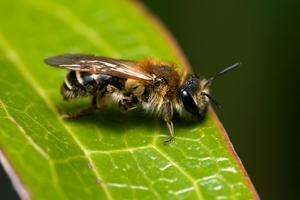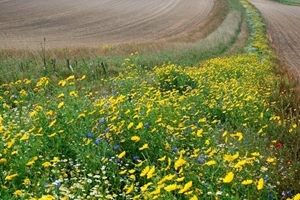 It’s rare to see a good news story about bees. Earlier this year a study modelling bumblebee declines suggested that rates of decline appear to be “consistent with a mass extinction”. Concerns are understandable. In addition to understandable conservation concerns, insect pollination is worth €15 billion in the EU.
It’s rare to see a good news story about bees. Earlier this year a study modelling bumblebee declines suggested that rates of decline appear to be “consistent with a mass extinction”. Concerns are understandable. In addition to understandable conservation concerns, insect pollination is worth €15 billion in the EU.
Thankfully, scientific research is not just sitting back and predicting impending doom. It is working with farmers, policymakers, and the public to make important changes to improve bees’ fortunes. In recent months, the Game & Wildlife Conservation Trust (GWCT) has been involved in published work on a wide range of subjects that could pave the way for a reversal in fortunes for these vital pollinators.
We know that wild pollinators are declining because of loss in flower-rich habitats, but only now has research identified which individual wildflower species are most beneficial to bees. This work, undertaken by Rachel Nichols and supported by the Game & Wildlife Conservation Trust, unearthed an alarming discovery. Of the 18 species found to be most attractive to bees, only one is in each of the flower mixes currently suggested to farmers by Defra. If we can work to improve these mixes, those working conservationists aiming to support pollinators on their farms will be given a better chance of success.
 Whilst not at the forefront of public thought like the honeybee, solitary bees provide another important source of pollination, particularly for fruit crops such as apples, pears, and strawberries. Despite this, little was known about their nesting requirements prior to a new study, also by Rachel Nichols with GWCT support. Her research unearthed the importance of bare patches of ground and, with simple guidelines, scraped plots could be easily included into any country’s current agri-environment scheme. Once more, research is informing policy to improve best practice, but it is those unsung conservationists – farmers and other land managers – who can put these findings into practice.
Whilst not at the forefront of public thought like the honeybee, solitary bees provide another important source of pollination, particularly for fruit crops such as apples, pears, and strawberries. Despite this, little was known about their nesting requirements prior to a new study, also by Rachel Nichols with GWCT support. Her research unearthed the importance of bare patches of ground and, with simple guidelines, scraped plots could be easily included into any country’s current agri-environment scheme. Once more, research is informing policy to improve best practice, but it is those unsung conservationists – farmers and other land managers – who can put these findings into practice.
Findings such as these will drive forward a new international effort to increase levels of pollinators and crop pollination at local and landscape scales. BEESPOKE, an EU-funded Interreg project led by the GWCT includes universities, farm bodies, policymakers and advisors from the UK, Belgium, the Netherlands, Denmark, Sweden and Germany. They aim to develop new approaches to increase the diversity of insect pollinators and crop yields by 10%. The project will work on 14 crop types across 72 demonstration sites and, importantly, will showcase best management practices and training materials for those managing the landscape.
ENDS
Notes to editors
The Game & Wildlife Conservation Trust – providing research-led conservation for a thriving countryside. The GWCT is an independent wildlife conservation charity which has carried out scientific research into Britain’s game and wildlife since the 1930s. We advise farmers and landowners on improving wildlife habitats. We employ more than 60 post-doctoral scientists and other research staff with expertise in areas such as birds, insects, mammals, farming, fish and statistics. We undertake our own research as well as projects funded by contract and grant-aid from government and private bodies.
For information, contact:
Eleanor Williams
Telephone: 07592 025476
Email: press@gwct.org.uk